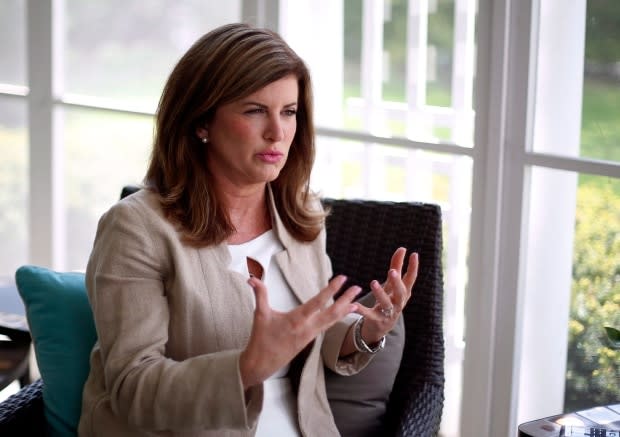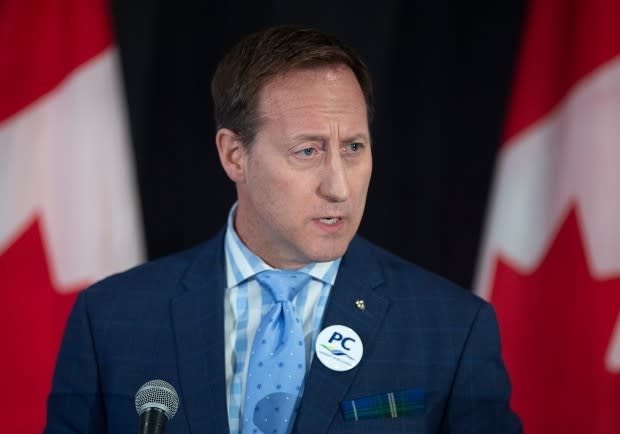Eyes off the prize: Why is the Conservative leadership field so small?
Back in 2017, it seemed like everyone wanted to lead the Conservative Party of Canada.
It's a curious place the Conservative Party finds itself in right now. In 2017, the party was trying to move past a bruising election defeat and the resignation of Stephen Harper, the modern party's co-founder — arguably a low point. But Conservatives still had 14 names on the ballot to choose from when voting began May 29.
Today, the party objectively is in far better shape. While it failed to defeat the Trudeau Liberals last year, it gained 20 seats and (as current leader Andrew Scheer likes to remind us) won the popular vote. It still tends to crush rival parties when it comes to fundraising.
And if electoral history offers any guide, after two terms the Liberals will be ripe for replacement in the next election. Which means the next Conservative leader has an awfully good chance of becoming the next prime minister as well.
So what is it about the job that seems to make it so unappealing for so many prominent, capable candidates?

Personal circumstances don't make a trend, and in several cases, the people stepping back from the race this time seemed to be doing it for personal reasons. Rona Ambrose considered a run for weeks before finally deciding that she loves her private sector job and would much rather live in Alberta.
Jean Charest toyed with the idea long enough to record videos announcing his candidacy — only to finally conclude that the party had changed too much in his absence and that, perhaps, his chances weren't what he'd hoped they would be.
Pierre Poilievre was widely expected to declare right up until the moment he ruled himself out, citing a wish to spend more time with his young family. John Baird was organizing for Poilievre; when Poilievre dropped out, Baird started thinking about seeking the job himself.
He spoke to his allies and friends and had put together all the campaign organization he was going to need. Then, quite suddenly, he didn't need it: he issued a statement online thanking his supporters and saying he was "enjoying his post-political life" too much.
The price to play
Part of the gap between the interest shown in the leadership in 2017 and what we're seeing now probably can be explained by the party's own rules for the 2020 contest — which seem meant to discourage outside challengers and lower-profile candidates. (My colleague Éric Grenier did an excellent job of laying out some of those factors here.)
In 2017, candidates had nearly a year to collect 300 party member signatures and raise the $100,000 entrance fee. This time, they have to raise $300,000 (including a $100,000 refundable deposit) and gather 3,000 member signatures by March 25 in order to secure a spot on the ballot for the June 27 vote.
That's a very high bar and an extremely tight deadline; it probably would have blocked most of the people running in 2017. Unless you're a known entity in the party, someone with an existing network of support, you're probably not going to get past it.

The initial entry deadline is next Thursday; by that point, candidates must pony up $25,000 and the signatures of 1,000 members from 30 different ridings in seven provinces or territories to qualify. As of publication, only three candidates had met those conditions: Peter MacKay, Erin O'Toole and Toronto lawyer Leslyn Lewis. O'Toole and MacKay have each reached "authorized contestant" status by collecting $50,000 toward the entrance fee, plus the $100,000 compliance deposit and 2,000 member signatures.
But this is still the Conservative Party of Canada we're talking about here. Things like steep entrance fees and the pull of private lives are going to factor into personal decisions, but something else must be going on — something that is keeping qualified people away.
Strangely, this situation is not unlike what we saw with the party's very first leadership race.
In 2004, just after the merger of the Progressive Conservatives and the Canadian Alliance, many high-profile people were getting their elbows bent to jump into the race — Mike Harris, Bernard Lord, Ralph Klein, Chuck Strahl and Peter MacKay, to name a few. None of them did, which left the door wide open for Stephen Harper to walk through.

But the comparison breaks down after that point. Back then, the party had no electoral track record, no history of contesting and winning elections over a decade. To leave a successful career to run for the Conservative leadership in 2004 was to run a substantial personal risk.
There are always risks in politics. So what are the risks this time?
Before the leadership speculation started building up, Baird was tasked by the party with conducting a comprehensive post-mortem of its performance in 2019. We still don't have a clear idea of what his conclusions were; we've heard people say that his report cites "centralized control" of the campaign as one of the problems, but that's not a particularly detailed or helpful observation if you're trying to get a party ready to fight an election. One assumes the report has more to say about why the party lost, and that it will be the task of the next leader to act on that analysis.
Beyond tactical matters, the next leader also will have to decide how Conservatives present themselves to Canadians in the next campaign. The party needs a serious climate change policy; coming up with one could prove controversial within the party itself. So could efforts to move the party beyond socially conservative positions to make it more appealing in urban ridings. The current leading candidates seem content to march in Pride parades and don't seem to have a problem with same-sex marriage — but the conversation isn't likely to end there.
Keeping the coalition together
To win, the Conservative Party needs to reach out beyond its base in Western Canada to build support in and around Toronto and in Quebec. But the plight of Canada's energy sector is ramping up voter rage in Alberta and Saskatchewan, which might make it harder for the next leader to reconcile those voters' wishes with those of Canadians elsewhere who hate pipelines.
Stephen Harper's success was based on his ability to get those camps working together — to build and maintain a coalition of traditional Progressive Conservatives, Western populists, social conservatives and (eventually) ethnic communities who identified with the party's values.
Any Harper loyalist will tell you that he succeeded in part because he kept that unruly coalition united inside the caucus itself, even as he was reaching out to it in the electorate. That was no small accomplishment, and it still speaks to Harper's leadership style, skills and, yes, his vision for his party and the country.
In short, leading the modern Conservative Party is a tough job — tougher even than it looks from the outside. Setting aside for a moment the high bar set for the leadership race, it's not something everyone's going to be willing to take on.
What Conservatives need right now is a leader who understands how important it is to keep that coalition alive and has a plan to do it. Maybe there's someone like that running already. If not, the party might end up going through another leadership race that doesn't quite prepare it for the election to come.


